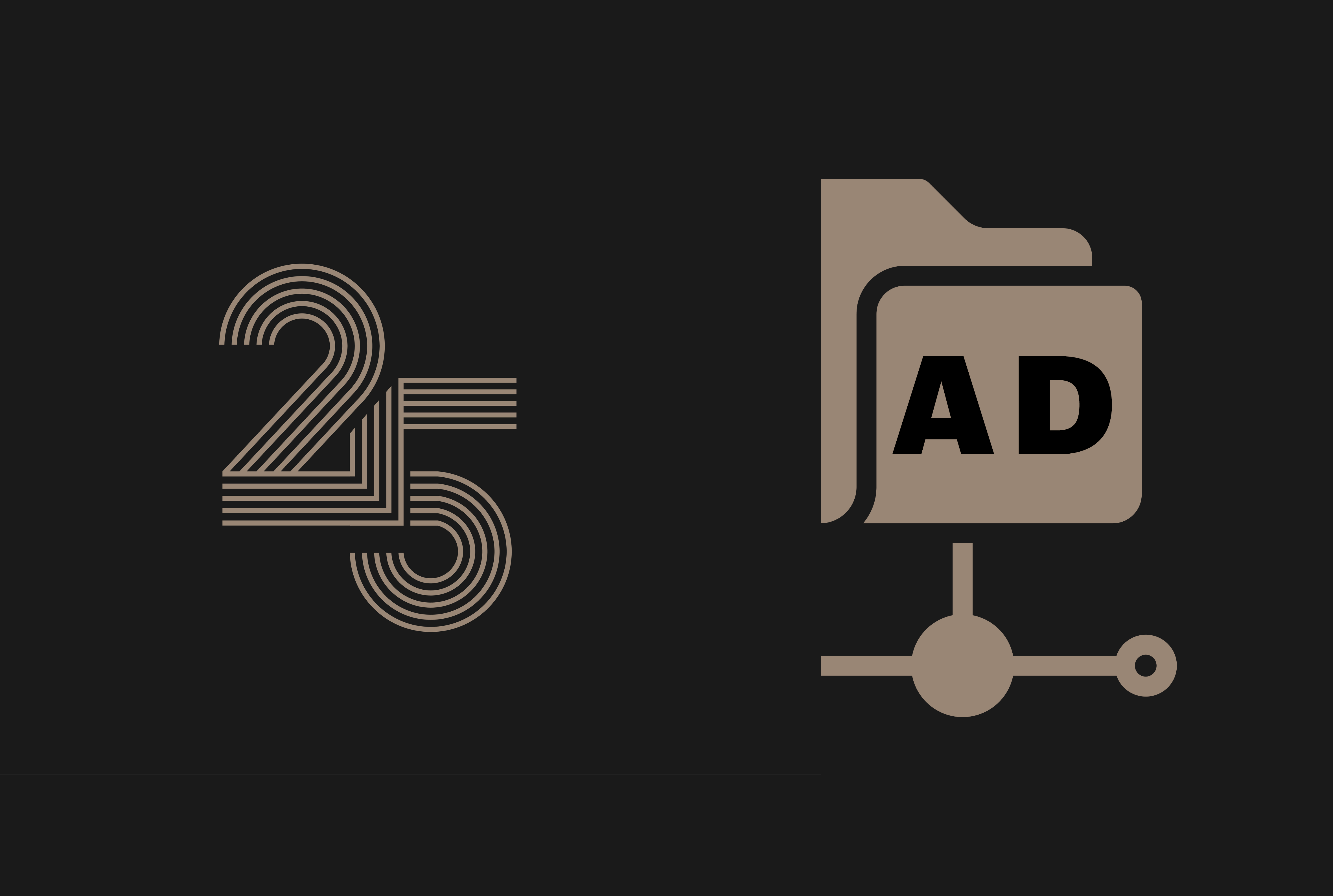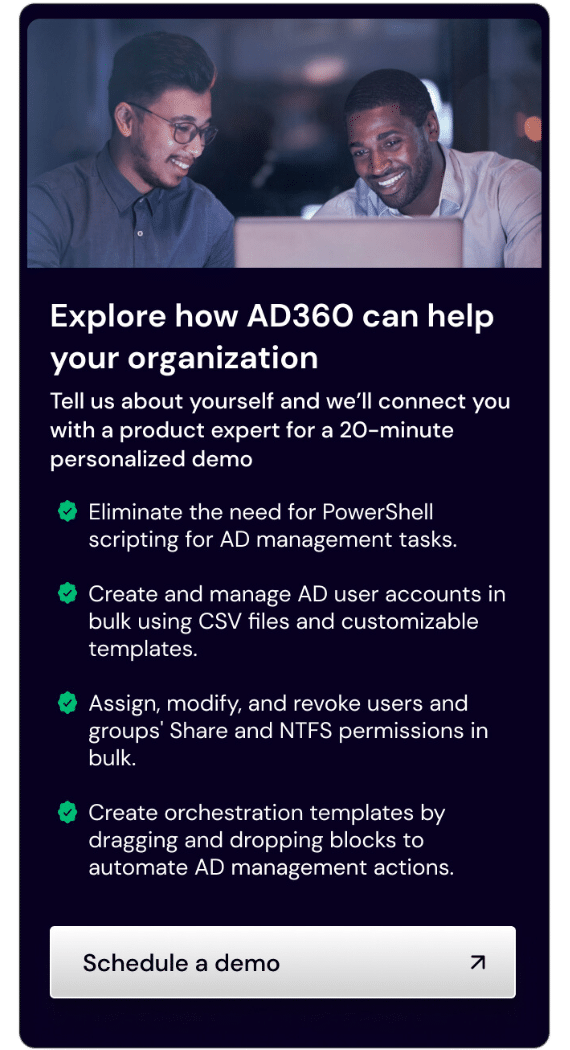
Hybrid identity
Zero trust
Kerberos
Forest recovery
core mechanisms ·
classic vs modernized ·
modernization runbook ·
implications ·
mental models ·
misunderstandings & fixes ·
forward look ·
field kit
Active Directory (AD) turned twenty-five not as a relic, but as the backbone of enterprise identity. In plain language, AD is the directory service in Windows Server that authenticates people and machines, authorizes what they can do, and keeps a consistent source of truth across your network. It matters today because you still log on with it, your shares still trust it, and your apps still depend on it—even as you adopt SaaS and Entra ID. The Active Directory 25-year evolution and future direction is less about replacement and more about reframing.
The familiar definition, and why it’s incomplete
Most teams describe AD as a domain controller with users and groups. That view is serviceable but shallow. AD is a distributed database with a security policy engine, a time-synchronized Kerberos realm, and a multi-master replication fabric. It is also a schema-governed platform where adding one attribute can ripple through replication, indexing, and authorization.
Concise definition: Active Directory is Microsoft’s distributed directory service for Windows networks. It provides authentication (Kerberos/NTLM), authorization (ACLs, group policy, and group membership), and policy-driven identity data storage, replicated across domain controllers with eventual consistency.
For practical context on time and DC selection, see our guide on VMIC vs AD time sync. Correct time is the hidden SLO for Kerberos.
The core mechanisms you must never forget
Identity as replicated state
Objects and attributes live in partitioned naming contexts. Change versions, USNs, and vector clocks drive conflict resolution. Replication is eventually consistent, not transactional; a few minutes of delay is normal.
Kerberos time and trust
Kerberos requires tight time skew control (±5 minutes by default). The PDC emulator in each domain is the time authority. If time drifts, everything from ticket issuance to PAC validation behaves strangely.
Sites, subnets, and topology
Sites reduce replication cost and logon latency. Subnet mapping guides DC selection. KCC builds connection objects with cost awareness. Wrong mappings cause chatty replication and slow logons.
Schema and indices
AD is schema-governed. New attributes need thought about uniqueness, indexing, and replication footprint. Schema changes are easy to do and hard to undo.
Roles and responsibilities
FSMO roles exist for a reason: schema master, domain naming master, RID master, PDC emulator, and infrastructure master. Misplacing them reduces your margin for error.
Classic AD, modernized AD, and the next five years
Classic AD: perimeter security, NTLM everywhere, shared admin accounts, GPO sprawl, backups without rehearsed recovery.
Modernized AD: zero trust principles, AES-only Kerberos, tiered administration with PAWs and JIT/JEA, rational GPOs, continuous health checks, and tested forest recovery.
What’s next: hybrid identity as the default, passwordless for humans, policy as code, stronger isolation patterns, and automated attestation of controls.
Classic AD
Modernized AD
Next 5 years
An expert, step-by-step modernization runbook
The following is intentionally dense and prescriptive. Treat it as a baseline pipeline you can repeat quarterly: assess → harden → validate → monitor → rehearse recovery.
1) Inventory and health check
- Discover forest and domains: Get-ADForest | Format-List *; Get-ADDomain | Format-List *
- List domain controllers and OS levels: Get-ADDomainController -Filter * | Select HostName,OperatingSystem,IsGlobalCatalog,Site
- Replication and DC health: repadmin /replsummary; dcdiag /c /v /e /fix
- Time sync: on PDCe w32tm /query /status; on members Test-ComputerSecureChannel -Verbose
2) Baseline security configuration
- Require LDAP signing and channel binding (GPO + registry).
- Kerberos hardening: disable RC4; prefer AES-256; ensure msDS-SupportedEncryptionTypes is correct for users and service accounts.
- Rotate KRBTGT twice after hardening (12–24 hours apart) using a controlled process.
- NTLM reduction: audit first, then block with narrow, time-boxed exceptions.
- Require SMB signing on sensitive servers; validate client support.
3) Admin tiering and workstation hygiene
- Define Tier 0/1/2. Provision PAWs for Tier 0 admins.
- Remove interactive logon rights for admins on lower tiers.
- Use gMSA for services; eliminate unmanaged service passwords.
- Deploy Windows LAPS for local admin password rotation.
4) Group policy reform
- Export and version: Backup-GPO -All -Path \\SecureShare\\GPOBackups\\YYYY-MM-DD
- Prefer fewer, well-targeted GPOs; minimize overlaps.
- Use deployment rings: dev → pilot → broad.
- Favor security filtering and OU design over excessive WMI filters.
5) Schema and delegation hygiene
- Review extended rights and OU delegations; reduce en masse write permissions.
- Audit constrained delegation (S4U2Proxy) and RBCD; remove overbroad entries.
- Tighten SIDHistory usage; allow only for time-boxed migrations.
- Document schema changes; assign owners; avoid index bloat.
6) Monitoring and alerting
- Forward critical AD events to SIEM: admin role changes, DC promotion/demotion, KRBTGT reset, replication/time failures.
- Baseline replication latency per site; alert on deviations.
- Watch for abnormal membership in Domain Admins, Enterprise Admins, and other built-ins.
- Detect DCSync patterns and anomalous directory replication permissions use.
7) Backup and forest recovery readiness
- Protect System State backups with immutability for every DC.
- Maintain a forest recovery plan with clean media and documented steps.
- Rehearse annually in a lab; validate metadata cleanup, RID master recovery, and DC rebuild.
- Use AD Recycle Bin for routine recovery; keep authoritative restore procedures ready for critical OUs.
8) Hybrid identity alignment
- Use staging mode for Entra Connect before cutover.
- Scope sync to only required OUs; isolate service accounts.
- Choose auth mode intentionally (cloud-auth, PTA, or federation).
- Align conditional access and passwordless with on-prem controls; document failure modes.
9) Hardening quick wins
- Use the Protected Users group for sensitive accounts; require MFA for admins everywhere.
- Disable unconstrained delegation; prefer constrained or RBCD with minimal scope.
- Block legacy protocols (SMBv1, unsigned LDAP binds, WebDAV as needed).
- Prefer AES-only service tickets; purge RC4.
Inherent tendencies you can’t escape
Eventual consistency is both feature and constraint. Design to tolerate minutes of replication delay. Privilege is contagious. Treat it like radioactive material. Time is identity. The PDC emulator is your heartbeat. DNS is usability. Bad DNS yields bad logons. Hybrid adds complexity. Design by principle, not by checkbox.
Mental models experts use
- Three-plane model: data (objects/ACLs), control (replication/FSMO/time), management (admins/GPO/automation).
- Blast radius budgeting: every control reduces spread, slows an attacker, or increases detectability.
- Contracts and invariants: time skew ≤ 5 minutes; SRV records resolve; replication latency within SLO.
- Policy as code: version, review, and ring deploy GPO and identity posture.
- State machine thinking: align timelines of replication, ticket lifetimes, and group caches.
Misunderstandings, risks, and correctives
- “We can virtualize DCs like any server.” Use VM-Generation ID; ban hypervisor snapshots for DCs.
- “NTLM is fine internally.” Audit then constrict; prefer Kerberos + SMB signing.
- “Domain Admins are convenient.” Use break-glass accounts, PAWs, JIT/JEA, Tier 0 isolation.
- “Schema changes are routine.” Govern schema like a product; avoid index bloat.
- “Forest recovery is theoretical.” Rehearse recovery with clean media and immutable backups.
Expert essentials checklist
- Time hierarchy correct; PDCe authoritative and monitored.
- Replication healthy; no lingering objects; repadmin clean.
- AES-only Kerberos; NTLM audited and reduced.
- LDAP signing + channel binding enforced.
- Admin tiering with PAWs and JIT/JEA in place.
- GPOs versioned, minimal, and ring-deployed.
- gMSA and LAPS deployed broadly.
- Forest recovery plan tested in a lab.
- Delegations reviewed; no unconstrained delegation.
- Hybrid sync scoped and documented; staging mode used for changes.
Applications, consequences, and the forward look
Identity will be managed like a reliability function with SLOs for logon success, ticket issuance, and replication freshness. Passwordless becomes normal; your weak link shifts to machine trust and service accounts. GPO and cloud policy will co-exist under a policy-as-code umbrella. Expect stronger isolation patterns and built-in hardening profiles that ship with secure defaults.
Further reading
- Internal: Excess permissions analysis
- Internal: AD 2025 enhancements explained
- Internal: VMIC vs AD time sync
- External: Kerberos (RFC 4120)
- External: NIST SP 800-63B: Digital identity guidelines
Get the AD modernization field kit
Want the full checklist, scripts, and a ring-based hardening plan? Subscribe and get our AD modernization field kit—including a Tier 0 essentials poster, a GPO baseline pack, and a forest recovery rehearsal template.


